Existing User Log In
New User Registration
Register for a free account to gain full access to the VGChartz Network and join our thriving community.



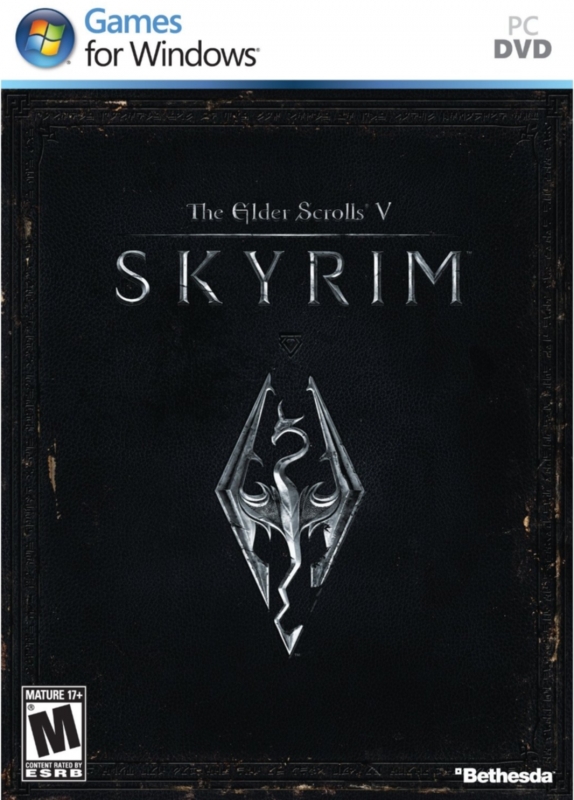

America - Front


America - Back

I will warn you that I cannot possibly cover every aspect of The Elder Scrolls V: Skyrim in this review, and it has been one of the more challenging I’ve ever had to write. Skyrim is such an enormous and engrossing experience that I’m not sure any review can really do justice to something you simply need to play, but perhaps this will help: The reason it took me a long time to start writing is I simply did not want to stop playing the game.
There is no shortage of conflict in the Nordic homeland of Skyrim, which is as violent and barbaric as the people who inhabit it. In addition to the rebirth of the legendary dragons, signifying the end of time, Skyrim has recently fallen into a bloody civil war between the ruling Empire and rebellious Stormcloaks. In the midst of this is you, Dohvakiin, the dragon-born, to save the world from the end of time. Amongst these conflicts, the nine holds of the Skyrim continue to operate largely independently, and each contains its own unique political and social landscape. Your character remains silent, though this isn’t a bad thing. Skyrim errs on the traditionalist side of RPGs, and your character is meant to feel like an extension of yourself rather than a pre-existing personality whom you are controlling for the duration of the game. While the main story is good, that’s why you visit Skyrim, but not why you stay.
More important, the world of Skyrim feels much more like a living, breathing world than anything seen previously in the franchise. For many, the lack of a strong tie to the narrative was one of Oblivion’s largest shortcomings. Bethesda’s new Radiant Story system tackles this issue head-on. The Radiant Story system ensures that the world reacts to how you play. NPCs respond differently depending on the quests you complete, and every action you take in the world feels solid and visceral. The already positive effect of this system is increased by the moral grays of many decisions in Skyrim. The game avoids many black and white decisions, and doesn’t judge you with a morality bar for how you play. All of these elements combine to make Skyrim’s narrative and setting engaging on a level unseen in almost any RPG to date.
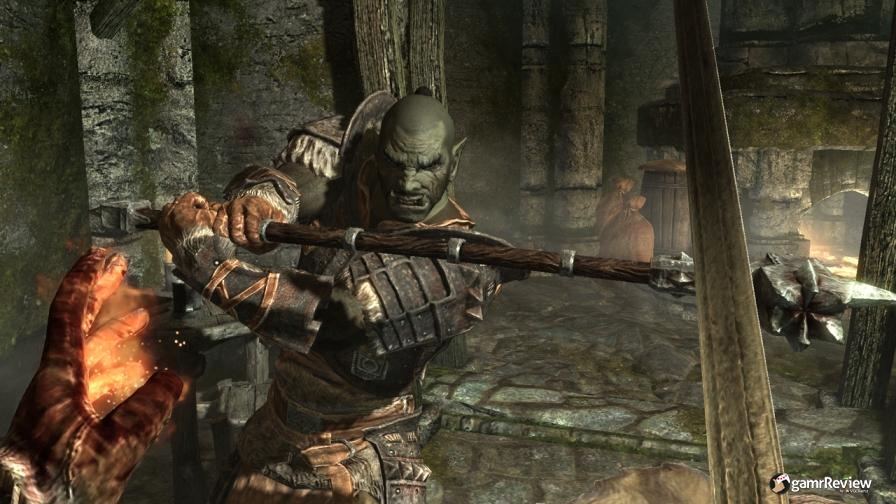
Development has never been richer in Elder Scrolls. In a pretty bold move, Skyrim has removed all pretense of “classes” from the game, allowing you to grow and develop your character entirely independent of standard RPG roles. Following Bethesda’s “You are who you play” moniker, you’ll level up via any skills you use in Skyrim. For example, if you use one-handed weapons, you’ll skill up in it, and gain experience. Every action you take in the game will level up a skill which will level up your character. This applies to all skills in the game, rather than just leveling from “major” skills like in Oblivion. The higher the level of the skill, the more experience you’ll gain toward raising your overall level, which will allow you to increase one of your three basic stats (Magicka, Health, and Stamina). The Skills are no longer increased through ranks, but through Skill Points earned as you level, which can be applied to any Perk in a Skill, assuming you meet the minimum Skill Level requirement.
Skills themselves have been improved as well. Useless things no one ever spent points in are gone, and the silly categories of Acrobatics and Athletics have been removed entirely. The “Mysticism” skill has also been removed, its spells redistributed into the other schools. Melee skills have been switched from Blade, Blunt, and Hand-to-Hand to a more logical selection of One-Handed and Two-Handed, while Block has been overhauled to become an active defense and countering Skill. Crafting gets a boost in this game with Smithing making its debut, allowing the creation of powerful weapons and armor from ore mined and found throughout the world. Enchanting has been overhauled as well. You now learn enchantments by first disenchanting already magical weapons and armor. Also helpful is the new Skills menu, which is a much cleaner and less overwhelming scrolling display, allowing you to easily comprehend your available progression options.
In practice the combat improvements are immediately apparent. Starting with melee, blocking is now an active action. A shield can be assigned to one hand while you assign a weapon to the other, and each hand is controlled with the trigger buttons. To absorb extra damage from attacks you have to actively block your opponent’s strikes, dropping your guard to counter blows with your own weapon. Shields can also be used to bash and charge-down opponents. This new active blocking system extends to two-handed weapons, although the damage mitigated is much lower than that of a shield. You can also dual-wield one-handed weapons, potentially doubling damage, but removing the ability to block entirely.
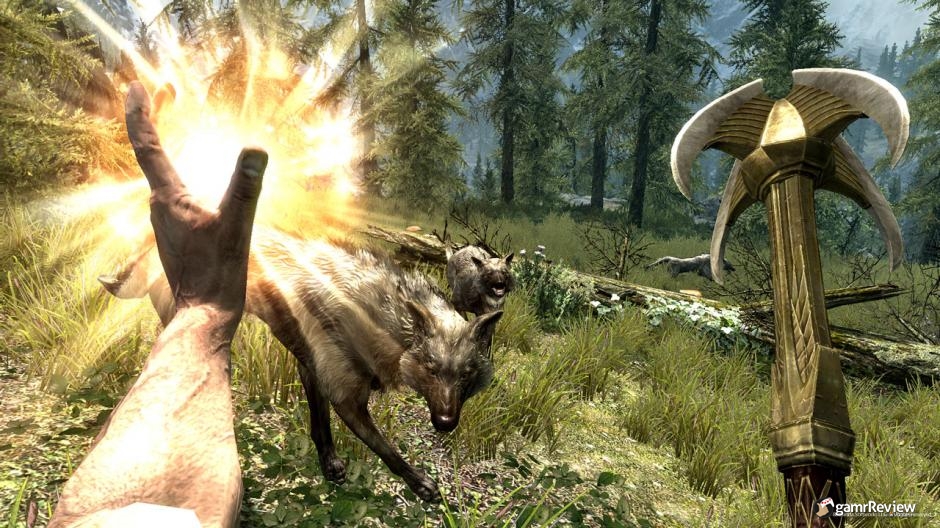
Power attacks are still executed by holding down the attack button, and cost stamina. Moving the analog stick in different directions while holding the button will change the power attack’s stroke and damage. The general feel of melee has been improved in a number of ways as well. In one of my favorite changes, third person view is now a viable and helpful option. The new third person camera and target reticule make a previously useless camera view very helpful for melee and getting a better view of your surroundings. In first person, the camera now dips and moves realistically with the attacks, adding a much stronger connection to the action happening on screen. This serves to resolve the plastic feel melee in previous entries in the series and adds immersion.
But don’t worry mages, you haven’t been ignored. Magic sees some of the biggest changes in this entry. Instead of binding spells to a face button, you now equip them to hands just as you do weapons and shields. The more than eighty-five spells in the game offer a huge variety of potential load-outs, and you can greatly strengthen a spell by equipping it in both hands and simultaneously casting. This variety is emphasized by the new secondary effects on Destruction spells. Fire causes a burn to do extra damage, Frost slows opponents and drains Stamina, and Lightning drains Magicka as it damages.
Stealth is improved by the new executions, giving a brutal feel to the silent destruction of your foes. Sneaking also has various status levels, indicated by an eye reticule. When the eye is completely closed the guards have no idea of your presence, but as it gradually opens they become more aware and alert, and search for you. When the eye is completely open they know your exact position and can see you. Combined with the ability to add spells to your offhand with your dagger, sneaking is a more interesting proposition than ever. In addition, bows are now far more damaging, but take longer to fire, allowing for long-ranged stealth executions or long-range attacks for characters which are otherwise melee focused.
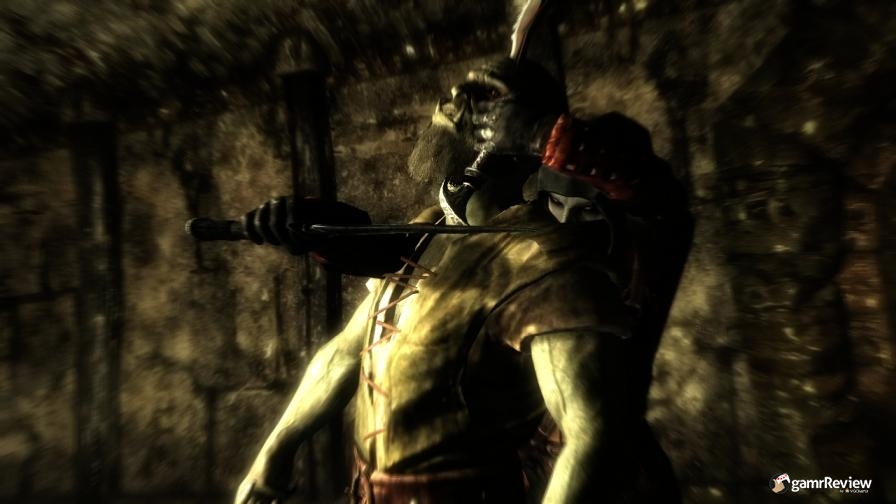
A new type of magic is introduced to the game in the form of Shouts, which are equipped to your shoulder button and don’t burn Magicka, but do include a cool-down. There are 24 shouts in the game which range from clearing the weather to breathing fire, and each shout has three different levels of power which you obtain by finding words of power in the world, generally in ruins or dragon shrines. Higher levels increase the effect, but also increase the cool-down, and you can adjust the force of your shout by changing when you release the button. You’ll need to take down dragons and gather their souls to unlock the Shouts, even after you’ve found the Words of Power.
And holy crap dragon fights are satisfying. There are three main reasons you’ll want to take the time to take them down: they provide souls which you need to unlock shouts, they provide scales and bones which you need to make the best armor in the game, and it’s really awesome to kill dragons! These dragons behave almost scarily realistically, flying most of the time to avoid your melee blows, and landing on buildings and other structures often to stay out of reach. You will feel the force of their wings as they swoop past, and the ground shake as they land. Dragons will even bite down on NPCs and animals, ripping them from the ground and tossing them to kill them instantly. Dragons come in multiple types, starting with the weak brown ones and gradually increasing in difficulty to the very strong black-colored beasts. The types you encounter will depend on your level, and as soon as you’re able to trounce one sort of dragon you’ll start finding another challenging type. They can be found in the main quest, roaming the world, or even attacking towns without warning.
Among the more general improvements to combat is a removal of Oblivion’s awful level scaling in favor of a much tamer version, similar to that found in Fallout 3. Enemies have a level range based on type and location, and you won’t find bandits running around in Daedric armor late-game. Your progression is noticeable and marked by how you fare against certain opponents, as it should be. Armor and weapon rewards fare a bit better in this entry as well. Elder Scrolls has always been more about exploration than loot, but the dragon armor is a nice incentive to level smithing, and even mages have some pretty awesome gear to find if you run through their guild quests. There are also a handful of special unique weapon and armor pieces available as quest rewards. The dungeons you’ll explore are incredibly varied, especially compared to Oblivion, and even the assets that are repeated will never result in direct clones. After dozens of hours you might feel a bit of déjà vu in a few of them, though.
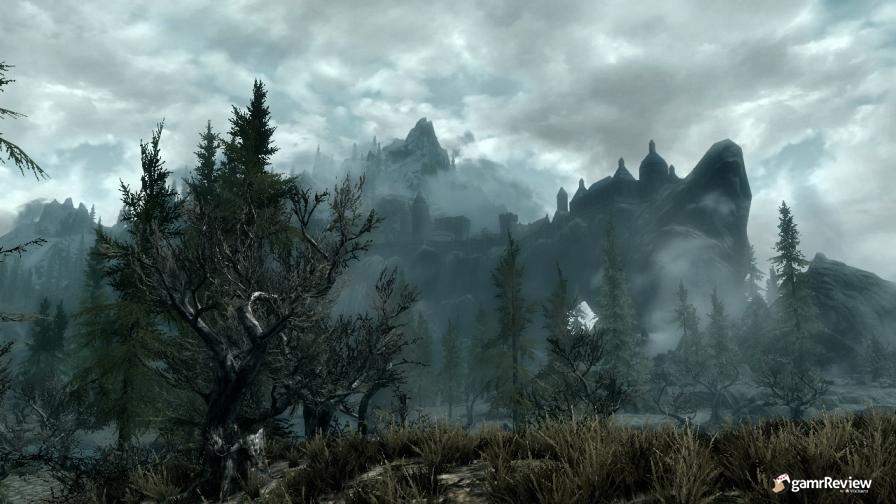
Outside of combat you’ll have plenty to keep you occupied. Ore veins can provide material for smithing, plants harvested for alchemy, and a massive variety of quests and side-quests attempted, ranging from crawling through one of Skyrim's dozens of dungeons to investigating a murder, squeezing debtors for their loans, or joining one of the four guilds in the game. Sneakier players can pick pockets and rob houses, while more upstanding citizens can go do some hunting for more crafting materials and sellable items. Shrines can be located to boost certain stats, and new Shout powers can be hunted down in various dragon shrines and dungeon ruins. You can even get married and buy houses in Holds in which you have a good reputation.
Exploring the world is almost a game in itself. Skyrim features an impressive variety of interesting biomes including lush evergreen forests, swamps, plains, hot springs, frozen wastes, and icy oceans. The insanely massive open world is full of secrets and treasures waiting to be discovered. Worried it’s too big for its content? Don’t be. Skyrim is densely packed with a variety of interesting locations, towns, camps, dungeons, and caves. Lore nuts will find a lot of information about the ancient and mysterious Dwarves among the scattered ruins throughout Skyrim. Ancient temples of the Nords built to worship the dragons during their age of power also await your discovery. Of course there’s always the chance of finding a dragon as well. All of this is much easier to find thanks to an improved 3D map and a much better integrated quest menu. This improvement extends to the general presentation of the menus in Skyrim. All items, spells, and potions are well-organized in easily navigable menus.
It’s hard to believe Oblivion and Skyrim are on the same consoles. The visual difference is enormous, and Skyrim’s beauty is astonishing. The Creation Engine created for the game provides lush visuals and a believable world, helped along by stunning art design. The amount displayed on-screen combined with the general quality is staggering. The gorgeous visuals don’t hold up quite as well when you get up close, however, and textures can be pretty simple in certain areas. Shadows also look somewhat pixelated, although the dynamic shadows and their ability to react and expand with the game’s plethora of dynamic light sources is impressive. The only other place the engine fails to astound is in facial animation, which fails to convey a lot of emotion. Regardless of nitpicking, the visual presentation is superb.
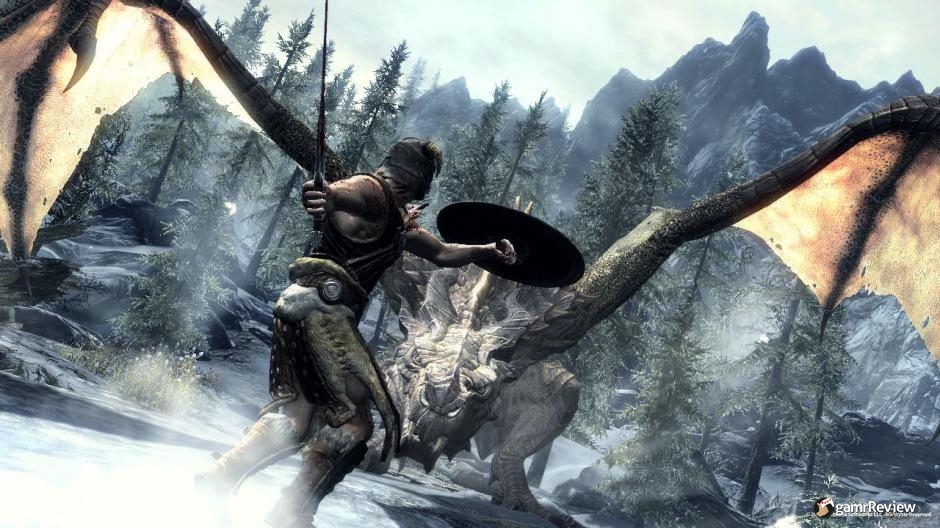
But even the visuals are surpassed by the audio. Skyrim’s soundtrack is utterly magnificent. The music blends in perfectly with the visuals, and wandering the world is luxurious synesthesia, as grand melodies meld with sweeping landscapes. In combat the music ratchets up the intensity, driving the adrenaline rush. This is especially true when the main theme comes blaring through during an epic dragon fight. I dare you to not hear that music blaring in your head the next time you exercise. The voice acting is equally sublime, with appropriate accents helping emphasize the intriguing personalities that populate the world. The entire presentation is helped along by the fact that this is easily the most stable Bethesda game I've ever played, with few bugs and glitches.
Are you tired of preorder bonuses and DLC scams that take away parts of a game and make it feel incomplete without them? If so, you’ll likely find Skyrim’s transparent and straightforward release as refreshing as I do. Not only is it a complete experience, it’s an enormous experience. My first play-through took me 65 hours, and I didn’t come close to sampling all the content in the sidequests, or even maxing my level (I was at level 30 of 50). I immediately started over with a new character, whom I have put another 20+ hours into while following a different section of sidequests and I’ve barely experienced any overlapping content. I can only estimate how much genuinely original content in this game, but suffice it to say, Skyrim is the gold standard for video game value. If there is even the slightest knock to the length, it’s that when you start to get near that 100 hours point you will notice some repeated assets in the dungeons, but not enough to keep them from feeling like unique treks. There are no direct clones in this game.
Skyrim is a transcendent experience. It may not be perfect, but it excels in almost every aspect of design. There are games that you play and there are games that you experience, and this is the latter. It sucks you in, and you will get lost in its depths. So go buy Skyrim, and then call your friends and your boss, and warn them that they won’t hear from you for a while.










| Total Sales |
0.00m
Japan |
1.18m
NA |
2.25m
Europe |
0.56m
Others |
3.99m
Total |
| 1 | n/a | 256,083 | 268,968 | 138,241 | 663,292 |
| 2 | n/a | 65,980 | 107,584 | 50,459 | 224,023 |
| 3 | n/a | 35,316 | 76,751 | 34,520 | 146,587 |
| 4 | n/a | 20,293 | 73,314 | 31,069 | 124,676 |
| 5 | n/a | 26,456 | 71,901 | 31,208 | 129,565 |
| 6 | n/a | 41,072 | 78,961 | 35,745 | 155,778 |
| 7 | n/a | 60,608 | 89,240 | 42,580 | 192,428 |
| 8 | n/a | 23,045 | 71,701 | 21,369 | 116,115 |
| 9 | n/a | 10,153 | 25,242 | 7,828 | 43,223 |
| 10 | n/a | 9,144 | 17,080 | 5,636 | 31,860 |
|
|
|
|
|
|
|
|
|
|
|
|
|
|
|
|
|
man-bear-pig
posted 07/02/2012, 01:13
I wonder how much this has sold when you include digital salesd... Message | Report |